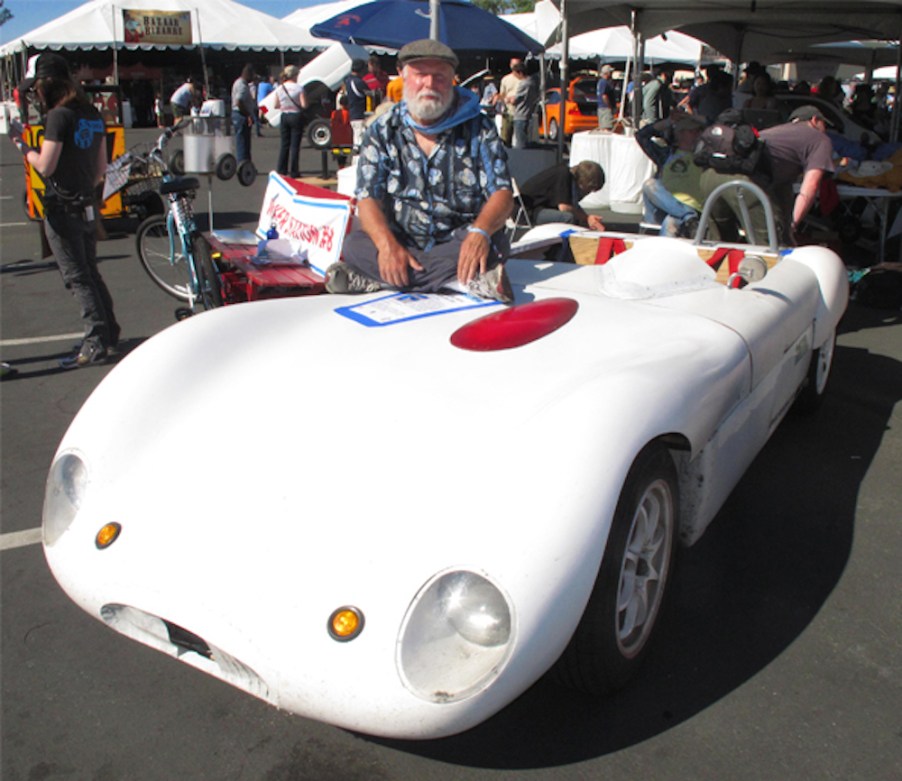
The Kinetic MAX Is a $10,000 Hypermiler You Can Build
Some people dream of putting together their own kit car, and others just like to tinker. But Jack McCornack of Kinetic Vehicles is a different breed of auto enthusiast. He aimed to build a lightweight, low cost hypermiler that got 100mpg. A lofty ambition, but he got it done. Starting as a budget kit car, he swapped the engine and streamlined the body to create Mother’s Automotive eXperiment (or MAX for short). And with enough automotive know how, you can put one together yourself.

The Evolution of the Kinetic MAX
The idea was first drawn up in 2008, starting life as a Locost Seven. No, that’s not a spelling error, it’s the budget version of the famous Lotus Seven sports car. With Britain’s junkyards littered with Ford Cortinas, Locost found a way to turn them into a cheap sports car. And by using the book Build Your Own Sports Car for as Little as £250, you could build a Locost too (provided you can find a donor Cortina).
But Jack’s Locost went a bit off-book. The main areas of change from the original instruction guide were the engine, and the donor car itself. Jack picked up a Corolla wagon from the 80s and used the chassis, transmission, and suspension. From there, he put a 35 horsepower Kubota D-1105T turbo-diesel engine in it. But the low power would be balanced out by the car’s lightweight body.
What you could call the “first generation” MAX entered into the Escape From Berkeley non-petroleum car challenge. An 800 mile race to Vegas held in mid 2008, MAX was converted to run not just on diesel and biodiesel, but vegetable oil as well. And the odd little Locost ended up winning, earning Kinetic major press and high praise.
But the Kinetic story isn’t all cheery. In 2008, before the Escape From Berkeley race, the original demo car was totalled. In 2009, Jack and the Kinetic team were robbed of all documents and logs for their projects. But they didn’t hit the brakes yet, trudging on with all new design plans for 2010.
The Kinetic MAX hypermiler’s final performance figures

The vital organs of MAX never really changed. It’s still the same (albeit modified) diesel engine and the same Corolla wagon chassis. The shell certainly did, which is what pushed it over the edge performance wise.
Fitted with the front end of a Lola Mk1 (an ultra streamlined race car from the 50s), MAX got an all new look. And after fabricating the back from scratch, MAX’s streamline look was solidified, and finally hit the performance figures they’d hoped for.
While the first generation. Locost bodied MAX could do 70mpg or 70mph (not both), the streamlined Lola body got 100mpg while cruising at 55mph. And from day one, Jack’s goal wanted to build a road-capable hypermiler, not something out of science fiction. Getting up to highway speeds, being able to seat two and carry some stuff, being cheap, and being fun were all goals laid out from the very beginning.
How to build your own at home

Let’s make one thing clear: MAX isn’t simple to build. That is, unless you have a thorough understanding of machining the parts, fabricating the body, and welding it all together. But it is possible, and it is affordable. Every step is laid out across the Kinetic website, including prices and techniques used. And while the site hasn’t been updated in almost 10 years, the resources and things you need to buy are all listed there.
In other words, this is an open source project. A time consuming and technically advanced project, but it’s available to anyone willing to give it a try. You may not know everything about building a car, but maybe you know how to strip a car. And maybe you have a friend who knows how to weld. It’s an excellent community test, one that could test the bond of your friendship. Consider it a loose recreation of the Top Gear segment where the trio built their own kit car.
Consider if you have the time, know-how, and resources to build your own hypermiler. It’d be a long and grueling job, but the results would be a car that sips less gas than a hybrid. It’ll spark infinite amounts of conversation and excitement, even at only 35 horsepower. And of all the project cars to tinker with, one that only costs $10k wouldn’t totally break the bank.


